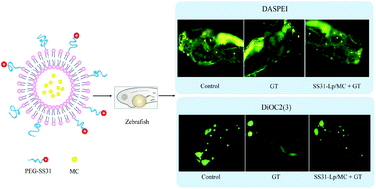Novel SS-31 modified liposomes for improved protective efficacy of minocycline against drug-induced hearing loss
Abstract
Hearing loss, which is regarded as a worldwide public health concern, lacks approved therapeutic strategies. Current drug candidates used to treat hearing loss commonly have low efficacy. To achieve the optimum drug efficacy, we designed a liposome system to preload a clinically approved, water-soluble drug, minocycline. Inspired by our previous research, we used a mitochondria-targeting tetrapeptide, SS-31, to modify the surface of liposomes. The results revealed that SS-31 modified, minocycline-loaded liposomes significantly increased hair cell survival against chronic exposure to gentamicin in a zebrafish model. The designed formulation maintained the activity of mechanotransduction channels in the hair cells, and thus did not result in any alteration in gentamicin uptake. This suggested that the protective efficacy of the liposomes was induced by modulating targets associated with cell death. Further studies are required to clarify the exact intracellular mechanism of the designed formulation and to determine its clinical benefits in patients with hearing dysfunction.



 Please wait while we load your content...
Please wait while we load your content...